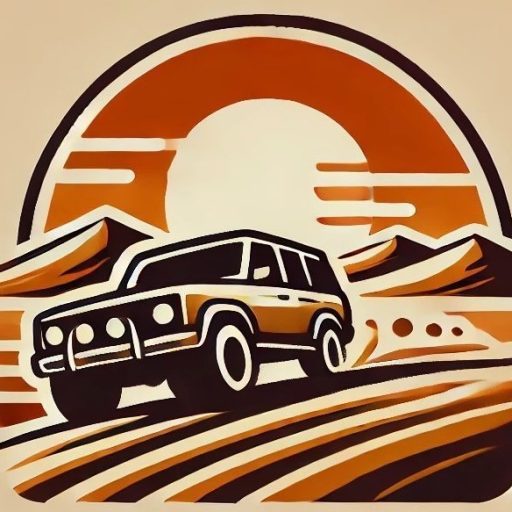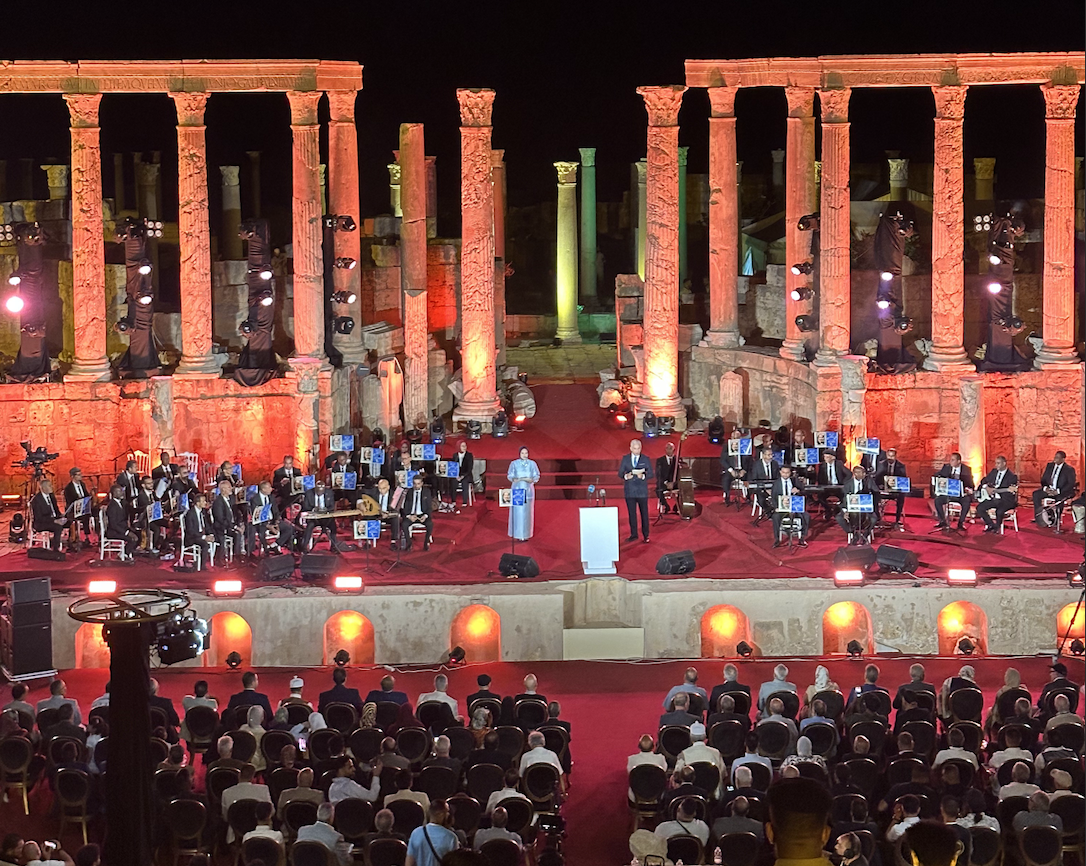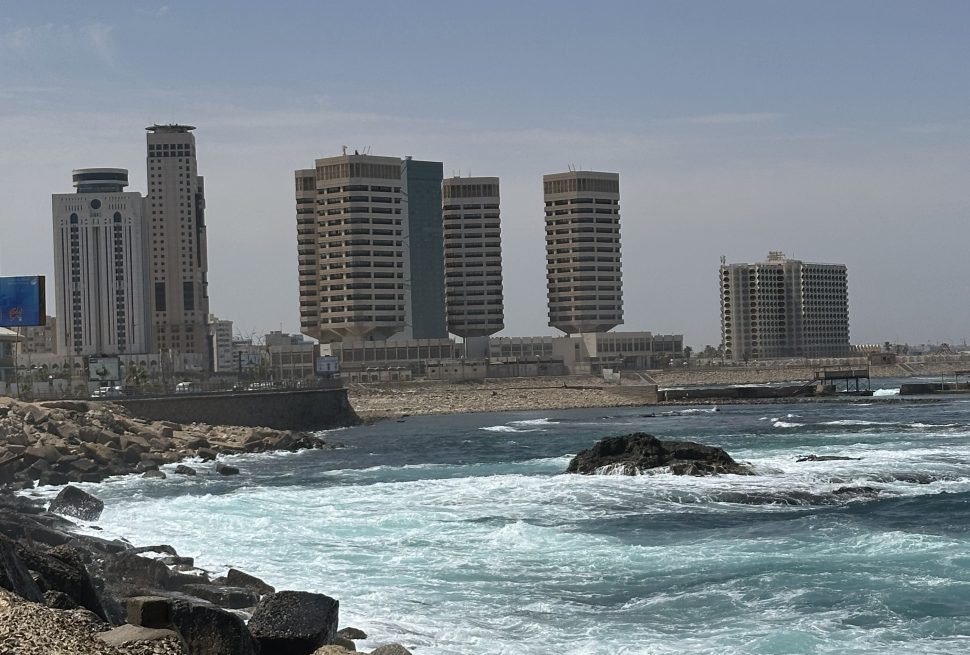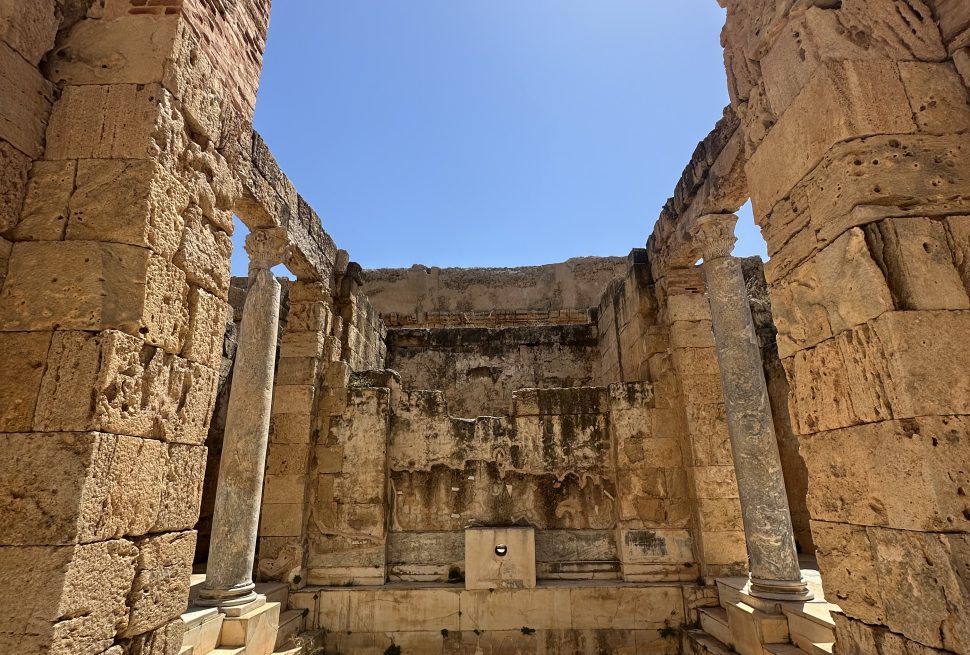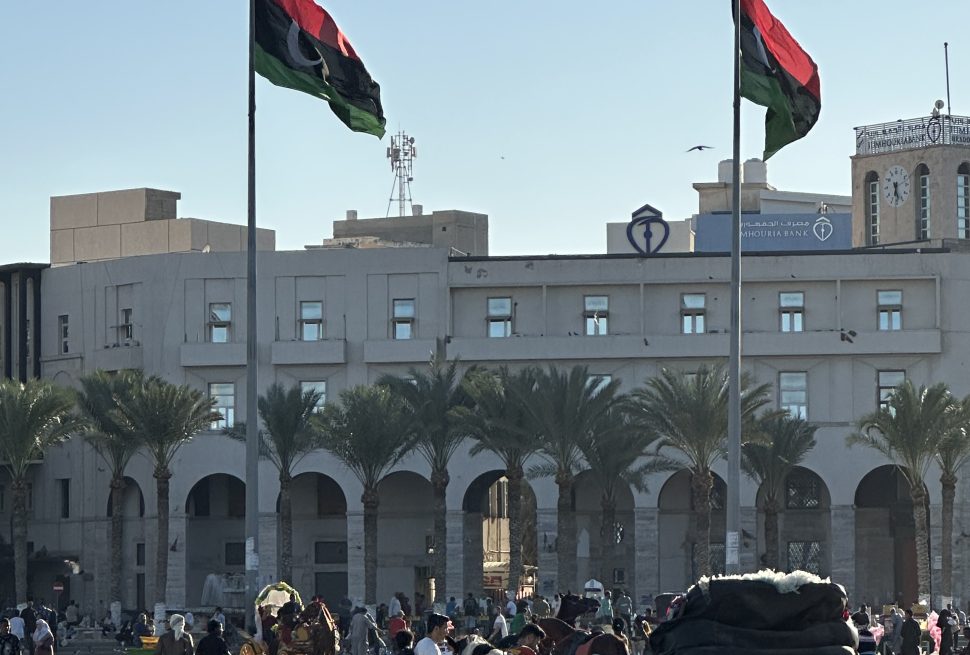Imagine stepping into the streets of ancient Leptis Magna nearly two thousand years ago. The Mediterranean sun glints off marble columns, the salty tang of the sea drifts inland, and the city hums with life. Fishermen push their boats into the waves at dawn while farmers haul baskets of olives and figs to the market, and merchants prepare amphorae for ships that will soon sail for Rome. This was a city alive, not just a collection of stone ruins, but a community pulsing with work, faith, family, and hope.
Today, wandering through Tripoli, Khoms, or the oasis towns of southern Libya, you can still feel echoes of that ancient rhythm. Markets hum with voices, fishermen navigate the same coastlines, and families gather for shared meals. Although centuries have brought new challenges and triumphs, the heartbeat of Libyan daily life has remained surprisingly constant.
Ancient Libya: Food, Work, and Community
In the time of Septimius Severus, when Leptis Magna reached the height of its glory, life was shaped by what people ate, how they worked, and how they connected. Food was not just sustenance; it was central to the social fabric. Wheat fields stretched across fertile plains while olives were pressed for oil that lit homes and fueled trade. Figs and grapes were harvested to sustain families and the city alike. The bustling markets of ancient Leptis Magna were filled with the aroma of fresh bread, dried fruits, and fish caught that morning from the Mediterranean. Furthermore, food was tied to festivals, religious events, and the cycles of labor, creating a rhythm that dictated the pace of life.
Work, for most people, was relentless. Farmers tended crops under the hot sun while fishermen braved unpredictable waters. Artisans crafted goods that flowed through the city’s markets, and slaves and laborers performed the heavy lifting in villas, warehouses, and public construction projects. The city’s wealthy elite lived in villas with mosaic floors, private baths, and dining rooms for lavish banquets. Yet even their comfort depended on the labor of the many who toiled for the city’s prosperity.
Community life was intertwined with work and ritual. Families lived in close quarters, often spanning multiple generations under one roof. Public baths, forums, and amphitheaters were not merely for leisure; they were spaces where social bonds were reinforced. Markets were centers of gossip, news, and interaction. Even the poorest citizens could participate in religious festivals or watch gladiatorial games, drawing them into the city’s collective heartbeat.
Nevertheless, life was not without fear. Disease could sweep through crowded neighborhoods, political instability could threaten families, and the unpredictability of storms or failing harvests constantly loomed. Survival required resilience, resourcefulness, and a strong connection to community.
Modern Libya: Continuity and Change
Fast forward to the Libya of today. Markets still form the heart of social and economic life. In the marketplaces of Khoms, the scents of fresh bread, olives, dates, and seafood fill the streets. Farmers continue to cultivate olives, figs, and wheat, crops that sustained their ancestors, although modern tools and irrigation have transformed production. Fishermen still venture into the Mediterranean, navigating currents that have shaped livelihoods for millennia. Consequently, the rhythm of work, trade, and sustenance remains, connecting Libyans today to their ancient past.
Families remain the core unit of Libyan life. Meals are moments of connection, weddings are community celebrations, and festivals mark the passing of time. The spaces that once hosted civic life, including markets, streets, and communal baths, have modern equivalents in cafes, mosques, and public squares. People gather not just to trade or work, but to maintain social bonds and cultural continuity.
Yet there are differences. Modern Libyans face new challenges such as political instability, economic uncertainty, and the pressures of globalized life. Unlike in Roman times, these challenges are often collective rather than imposed by an emperor or elite few. Religion, too, plays a different role. While the ancient city’s polytheism was often divisive and used by elites to assert status and control, Islam now provides unity, rhythm, and a sense of shared purpose. Daily prayer, Ramadan, and Eid tie communities together, offering a calm anchor in an otherwise unpredictable world.
Religion as a Unifying Thread
Religion, both past and present, has shaped the social fabric of Libya. In Severan era ancient Leptis Magna, temples to Jupiter, Hercules, and Roman emperors stood alongside private shrines to Punic gods such as Baal Hammon and Tanit. Participation in religious festivals was closely tied to social standing, and the elite used religion to assert power. For ordinary citizens, these rituals were part of survival and civic identity, yet they often reinforced divisions rather than unity.
In contrast, modern Libya finds cohesion through shared faith. Islam provides a rhythm to daily life, connecting coastal cities to desert oases and rich families to working-class communities. The call to prayer, communal fasting, and charitable giving offer continuity with the past in function and form. Where religion once separated, it now unites, providing a moral and social compass that steadies communities in a changing world.
Continuities Across the Ages
There is a striking continuity between ancient and modern Libya. Olives, wheat, figs, and seafood remain staples. Markets continue to be the center of social life. Family bonds still govern daily decisions. Even the challenges, such as weather, trade disruptions, and the need to sustain community, echo the past. However, whereas ancient Libya depended on strict social hierarchies and imperial favor, modern Libya relies on networks of family, faith, and local community. People still labor and celebrate, yet the rhythm is shared and inclusive, creating a collective resilience that is uniquely Libyan.
Walking through ancient Leptis Magna today, you can see the layers of time. The Severan Arch towers overhead, mosaics gleam faintly in the sun, and the amphitheater whispers of past gatherings. And yet, as you step into a modern Libyan marketplace, you sense the same pulse: families, work, trade, faith, and community interwoven into the fabric of daily life.
From Ancient Leptis Magna to Present
Leptis Magna was more than a Roman city; it was a living organism. Food, work, family, and faith were interdependent, creating a wholistic life that connected all citizens, rich or poor, to the city and to each other. Modern Libya, in many ways, continues that tradition. People still rely on shared resources, communal gatherings, and spiritual practices to navigate life’s uncertainties. The names, faces, and tools may have changed, but the essence remains the same.
Visiting Leptis Magna today, or walking through Khoms’ bustling streets, you see the continuity: the labor, the festivals, the smells, the markets. You hear the echoes of fishermen, artisans, and merchants. You feel the heartbeat of a culture that has survived, adapted, and endured, a culture that still finds wholeness in food, family, work, and faith.
Libya’s daily life is not just a story of survival; it is a story of resilience, connection, and continuity. Through IntoLibya, you can experience it yourself, step into the streets where history still breathes, and discover a life rhythm that has endured for millennia.
Follow us on instagram @intoLibya
